Celebrating Female Servicemembers During Womens’ History Month
The Foundation for Women Warriors and the Mt. Soledad Memorial Association recognize trailblazers in the military
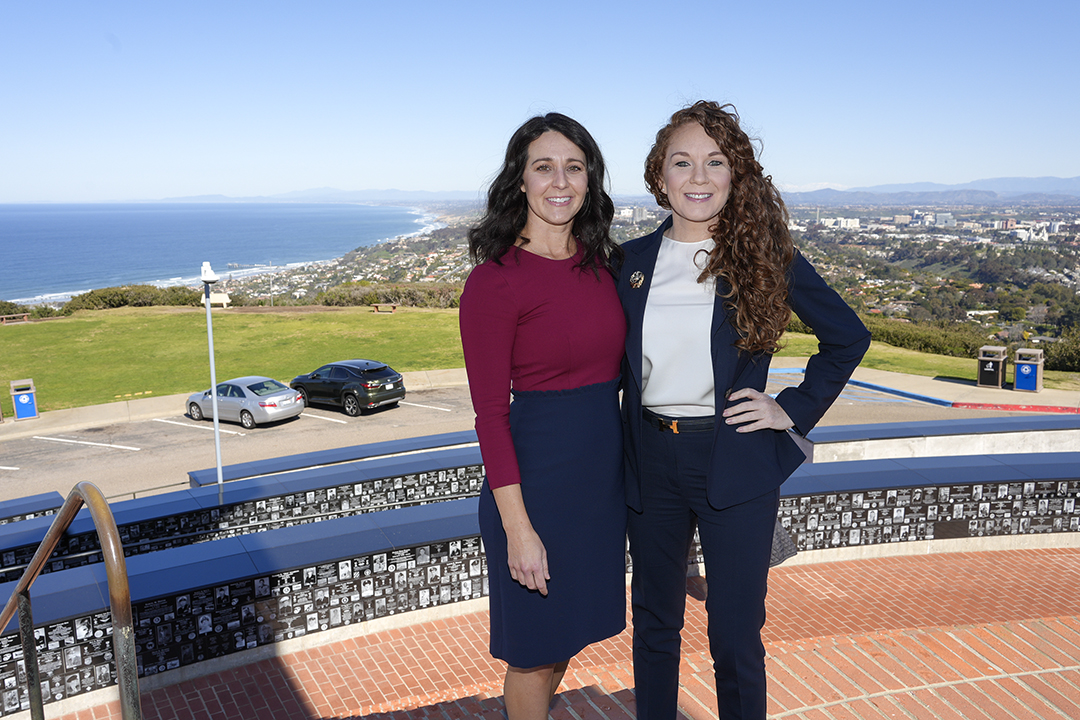
Women have served in the U.S. military as far back as the Revolutionary War. They even disguised themselves so they could serve. But for a long time, women’s service was not a ‘given,’” says Jodie Grenier, CEO of the Foundation for Women Warriors, who deployed twice to Iraq while on active duty in the Marines.
Most Americans are familiar with the WAVES (Women Accepted for Volunteer Emergency Service) and WAC (Women’s Army Corps). There was also an organization called WASP (Women Airforce Service Pilots), made up of women who, during World War II, ferried new aircraft, towed targets for aerial and ground-to-air target practice, and served as flight instructors. More than 1,000 WASPs flew upwards of 60 million flight hours, 38 of whom lost their lives in service to their country.
As the name WAVES states, the vast majority of women in the military were emergency workers brought in during wartime to fill jobs that would free up men to fight. During WWI there was a group of women who served as telephone operators known as the “Hello Girls.” There was also an all-Black women’s unit deployed to England and France to clear backlogs of mail.
Despite their supposedly noncombat positions, many women were killed while serving, and others became prisoners of war. But it was not until the passage of the Women’s Armed Services Integration Act of 1948 that military service became a true career path for women — the same year the U.S. military officially ended the practice of racial segregation.
2023 marks the 75th anniversary of those historic events, and perhaps not surprisingly, three-quarters of a century later, women are the fastest-growing group of veterans in the country, with some 28,000 women veterans here in San Diego.
That’s a large number, and women veterans “often seamlessly integrate into the civilian population,” says Jennifer Givens, a Navy veteran and program manager of the Mt. Soledad Memorial Association. But while the number of women veterans is growing, at the time of their service there wasn’t the same natural sisterhood available when they transitioned out as there was for their male counterparts, and many still face challenges as they reintegrate into civilian life.
Givens and Grenier are two of the women veterans working to change this, including addressing the unique difficulties women face such as the fact that some smaller VA facilities do not even have a gynecologist on staff.
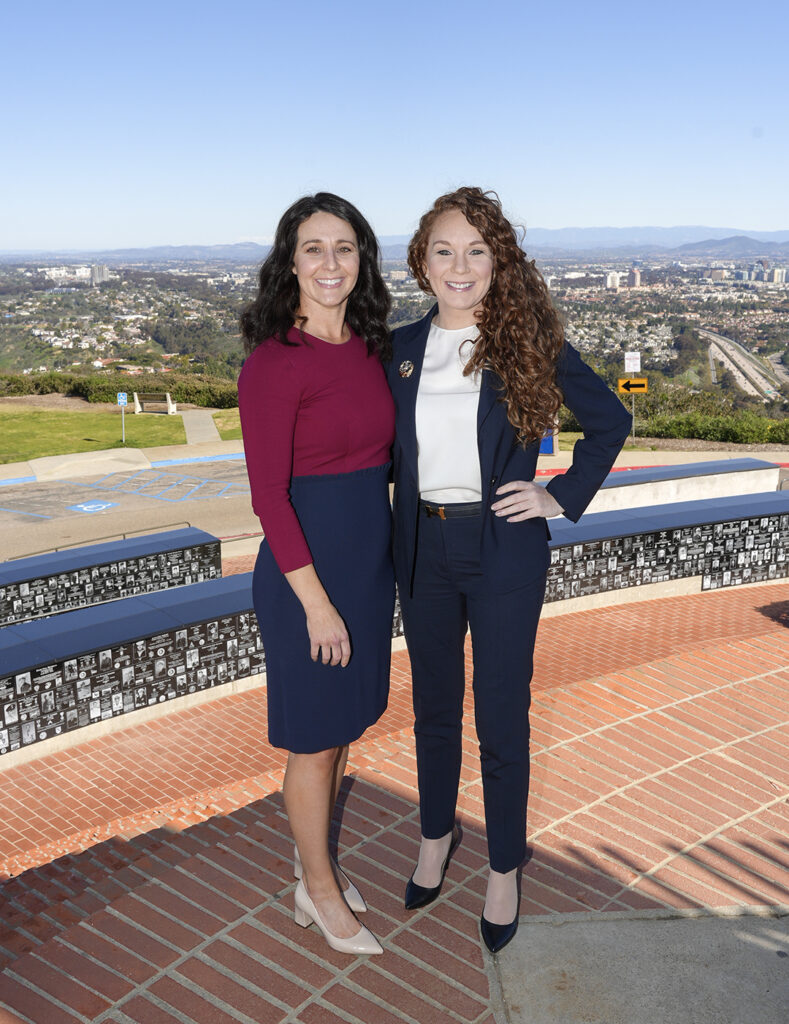
Part of their work involves recognizing and celebrating both the servicewomen who came before them and the women now blazing new paths in the military. And that is precisely what they will be doing on March 23 from 11am to 1pm when the
Mt. Soledad National Veterans Memorial hosts its second annual Women’s History Brunch.
At the invitation-only event, attendees will include active duty servicewomen nominated by their local command for outstanding service, as well as women who have paved the way. Since 1976, women have been able to attend the three military academies — West Point, Annapolis, and the Air Force Academy — and since 2013, all roles, including combat roles, have been open to women.
“Women have now been serving long enough to assume the highest positions, both as officers and enlisted personnel,” says Givens, who points out that the aircraft carrier USS Abraham Lincoln is now commanded by a woman, and a woman was recently appointed Commandant of the Coast Guard, making her the highest-ranking woman currently serving in the military.
However, as mentioned, women transitioning from the military face their own range of challenges, and the Foundation for Women Warriors is specifically dedicated to preventing homelessness among veteran women. Founded more than 100 years ago, the organization began as a housing association for nurses, widows, and mothers of fallen service members. As women’s roles have changed, so too has the organization, which in the early 2000s began shifting its focus to women members of the military returning from Iraq and Afghanistan.
Leaving the service, women often need additional schooling to continue their careers, which comes with practical challenges and financial hardships. The Foundation for Women Warriors supports transitioning women through rental assistance, utility stipends, and childcare.
In addition, the Foundation provides new cribs, car seats, diapers, and other household supplies, as well as professional and personal development programs. “We provide an environment where women can find other women who have served and feel like they’re understood,” says Grenier, who will be speaking at the luncheon. “That can be transformative.”
There are roughly 300 women from all branches of the military honored at the Mt. Soledad National Veterans Memorial, and this year, six in particular are being highlighted.
Florence L. Court-Urias enlisted in 1943, unknowingly becoming one of the first women to join the newly established U.S. Marine Corps Women’s Reserve. During her eight years of service, she worked as a military pay clerk and was promoted to Master Sergeant, and continued to serve in the Marines for 33 years at Marine Corps Recruit Depot in San Diego.
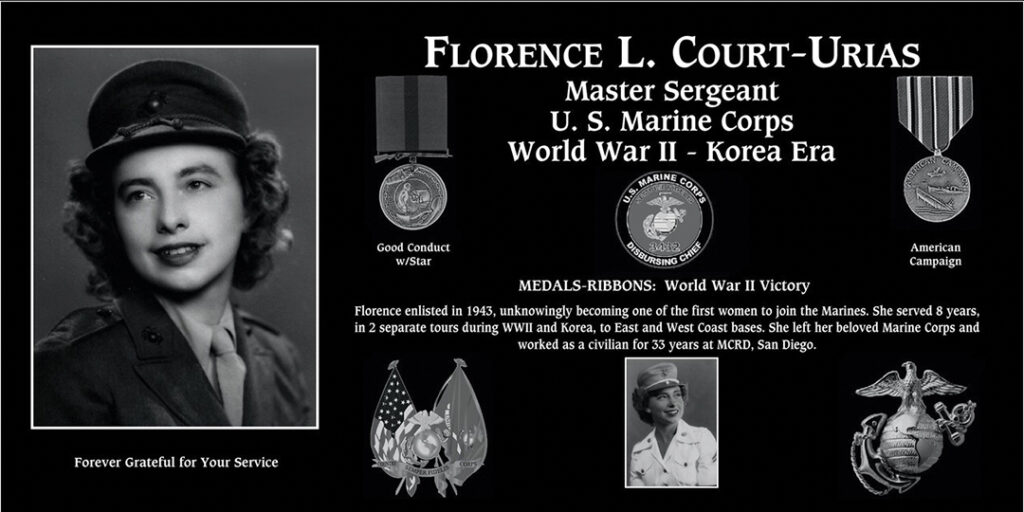
Marilyn Myers Peyton served as a Women’s Air Force Service Pilot (WASP) in WWII, during which time she flew as a test pilot assuring aircraft were safe and ready for her male counterparts to fly into combat. More than 25,000 women applied to be a part of the WASP program, and Peyton was only one of 1,074 to be accepted. Not formally considered military until long after she completed her service, WASPs were finally awarded veteran status in 1977.
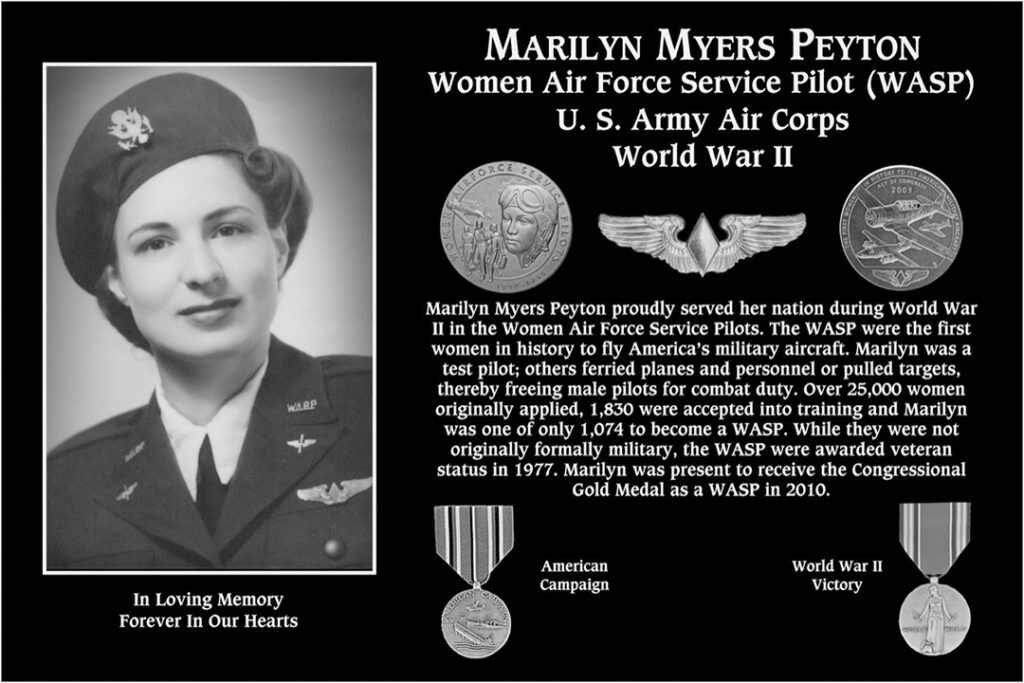
Lori Piestewa enlisted in the U.S. Army in March 2001, shortly after the attacks of September 11. She deployed to Iraq in January 2003 to Iraq and died of injuries she incurred two months later when her convoy was ambushed. A member of the Hopi tribe, Piestewa was the first Native American woman to die in combat while serving in the U.S. military.
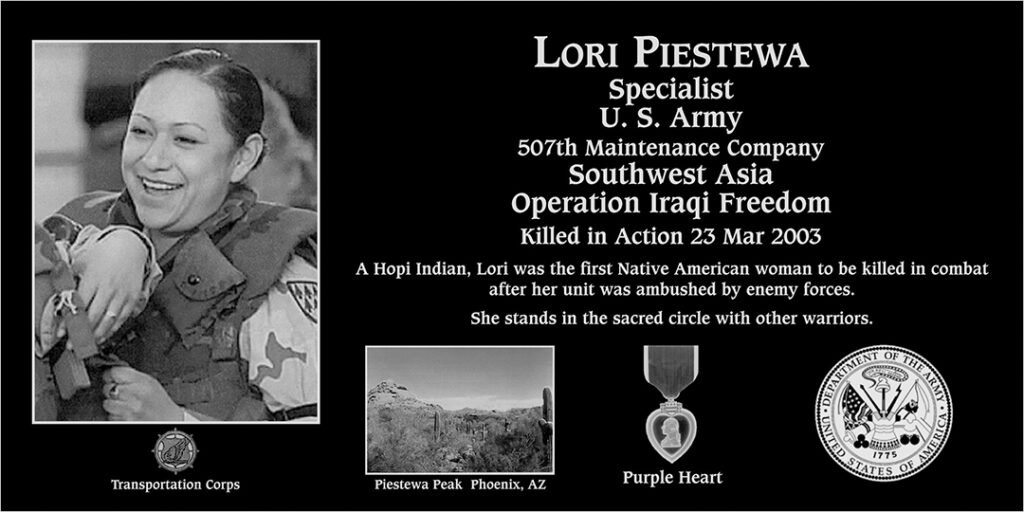
Ruth Lineda Flickinger joined the Navy in 1942 and served with the Navy Medical Service Corps during World War II, and in Korea and Vietnam. During her 26 years of service, Flickinger was one of 38 nurses aboard the hospital ship USS Bountiful in June of 1946 to witness the explosion of an atomic bomb in the Bikini Atoll. She also served as Special Diet Instructor at Naval Hospital San Diego from 1965 to 1968.
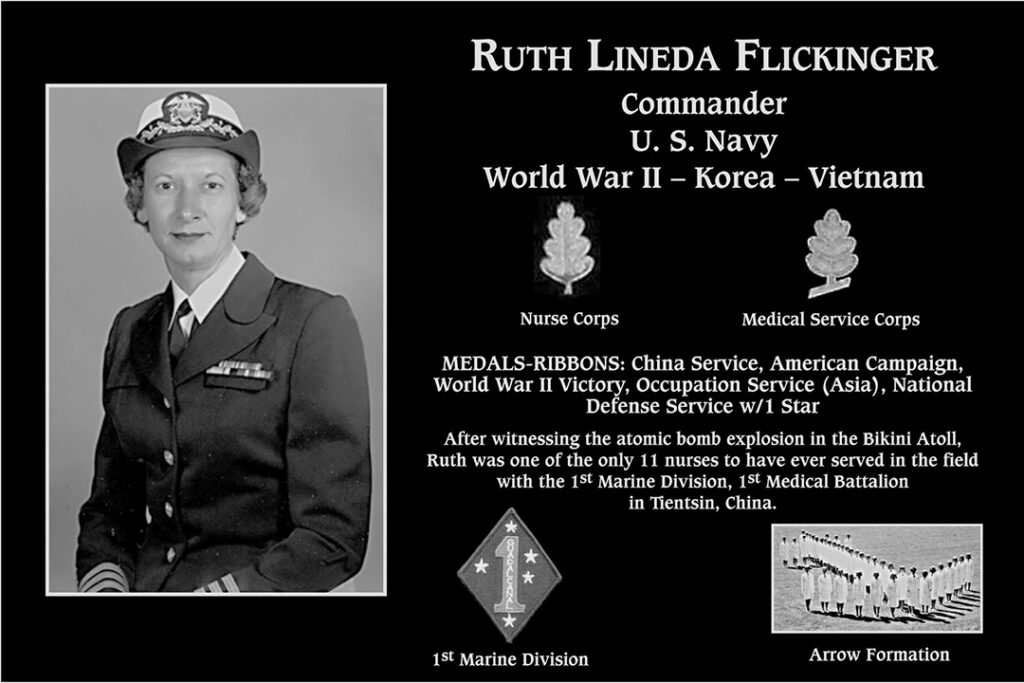
Evelyn H. Shaw served in the U.S. Coast Guard for 32 years, originally in the Women’s Reserve, known as the SPARS, during World War II. She was the first woman to complete the U.S. Naval War College course by correspondence and concluded her career in the Coast Guard reaching the rank of captain.
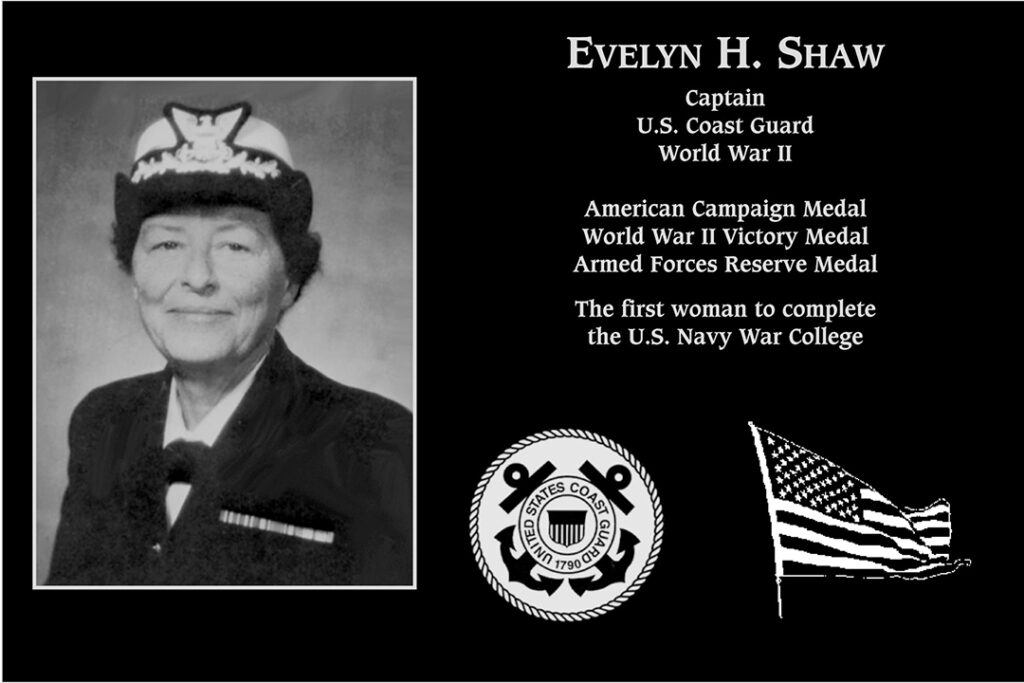
Indira Y. Kozak was a Fleet Marine Force hospital corpsman in the U.S. Navy and served during the Iraq Campaign. She was honored for her leadership, superior performance, and support to the Marine Corps combat units in Iraq.
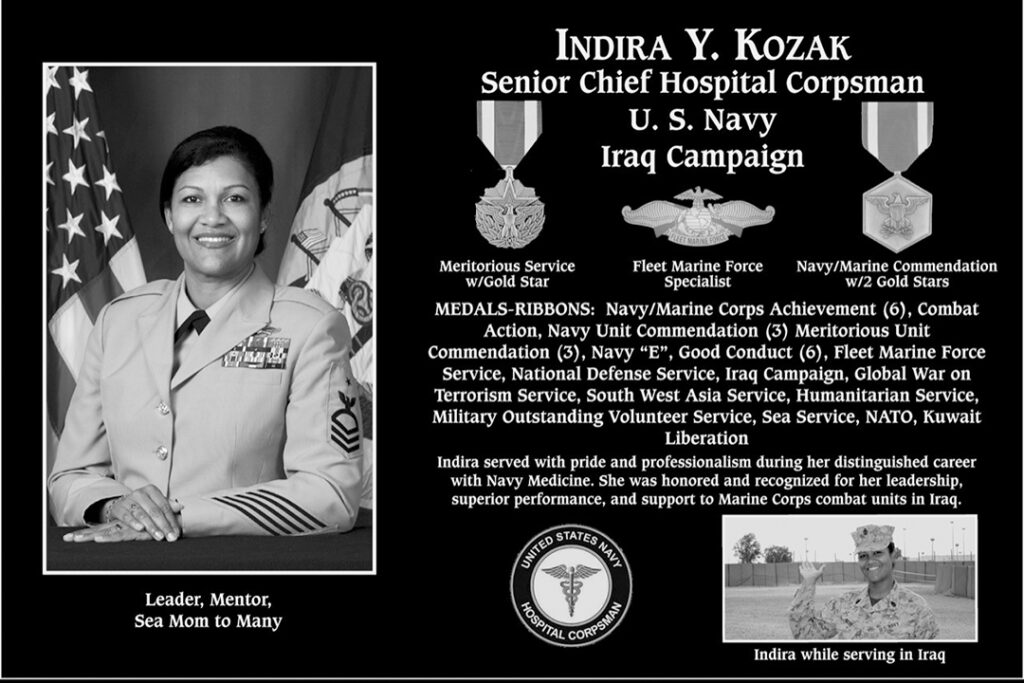





One Comment
Brian McClean
Great people and great upcoming event. Very honorable!